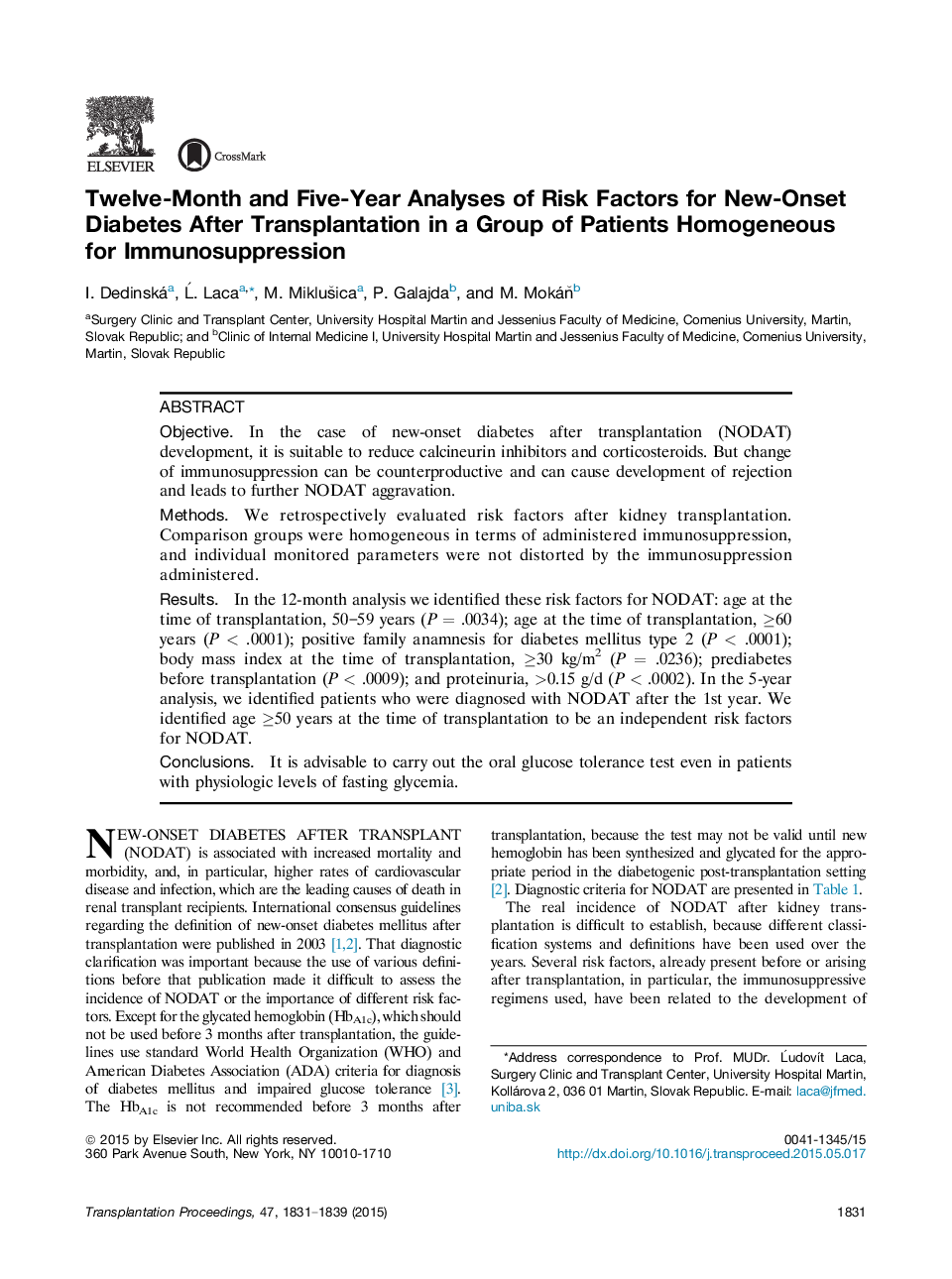| Article ID | Journal | Published Year | Pages | File Type |
|---|---|---|---|---|
| 6247202 | Transplantation Proceedings | 2015 | 9 Pages |
â¢Groups were homogeneous in terms of immunosuppression regimen.â¢Age at the time of transplantation was an independent risk factor for NODAT.â¢Positive family history for type 2 diabetes mellitus was an independent risk factor for NODAT.â¢Body mass index â¥30 kg/m2 at the time of transplantation, prediabetes before transplantation, and proteinuria were independent risk factors for NODAT.
ObjectiveIn the case of new-onset diabetes after transplantation (NODAT) development, it is suitable to reduce calcineurin inhibitors and corticosteroids. But change of immunosuppression can be counterproductive and can cause development of rejection and leads to further NODAT aggravation.MethodsWe retrospectively evaluated risk factors after kidney transplantation. Comparison groups were homogeneous in terms of administered immunosuppression, and individual monitored parameters were not distorted by the immunosuppression administered.ResultsIn the 12-month analysis we identified these risk factors for NODAT: age at the time of transplantation, 50-59 years (P = .0034); age at the time of transplantation, â¥60 years (P < .0001); positive family anamnesis for diabetes mellitus type 2 (P < .0001); body mass index at the time of transplantation, â¥30 kg/m2 (P = .0236); prediabetes before transplantation (P < .0009); and proteinuria, >0.15 g/d (P < .0002). In the 5-year analysis, we identified patients who were diagnosed with NODAT after the 1st year. We identified age â¥50 years at the time of transplantation to be an independent risk factors for NODAT.ConclusionsIt is advisable to carry out the oral glucose tolerance test even in patients with physiologic levels of fasting glycemia.
